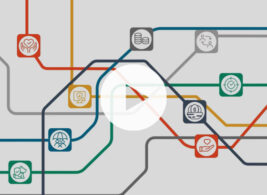
Be informed about the ever-changing world of benefits.
We want to help our customers and partners stay ahead of the curve in the complex and rapidly changing world of benefits and health care. bswift encourages dialogue and offers useful information through our resources.
Featured Insight

Articles — Mar 11, 2024
Optimize Benefits Enrollment: HR Best Practices for the ‘So-Called’ Off-Season
Now is the perfect time for HR to prepare enrollment resources, improve employee benefits communications strategies, and enhance benefits portfolios.
- View All
- Customer Stories
- Articles
- Videos
- Webinars
- Whitepapers
- Spotlight Resources
- Partner Resources

Articles — Apr 25, 2024
Introducing the AI Supercharged Emma™: Your Employee Benefits Guide
Meet the all-new Emma™, a powerful AI assistant who simplifies employee benefits with personalized recommendations, plan comparisons, and 24/7 support.

Videos — Apr 22, 2024
Simplify Benefits, Unlock HR’s Potential: bswift Has You Covered
Say goodbye to benefits headaches and HR hassles. bswift’s adaptable solutions simplify benefits administration so you can focus on the parts of your job you love the most.

Podcasts — Apr 17, 2024
bWise – Ep 28: Mastering Digital Transformations with Ben Admin Vet Dave Mankowski
Get practical insights for driving successful digital transformations across industries. Listen in as Dave Mankowski shares his 20+ years of experience and wisdom, with real-world examples of digitizing businesses.

Articles — Apr 16, 2024
Solving the Employee Communication Puzzle: Tips for Better Engagement
Effective employee communication is crucial for HR. Learn best practices to improve engagement, benefits utilization, and workforce satisfaction through strategic campaigns.

Customer Stories — Mar 28, 2024
Flexible and User-Friendly: bswift Benefits Enrollment Solutions
Learn how bswift’s benefits administration platform streamlines HR’s work with flexible technology, seamless customization, and user-friendly tools to deliver benefits the way they’re meant to be.

Customer Stories — Mar 28, 2024
Ditch the Stress: How bswift Makes Benefits Administration Easy
bswift’s innovative platform takes the hassle out of benefits administration. See how we empower HR with user-friendly tools to help deliver benefits the way they’re meant to be – simple, efficient, and painless.